Papers by Frank van der Hoeven
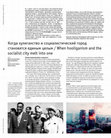
проект байкал
In the Western Balkans, one can still find many city enlargements produced in the era of socialis... more In the Western Balkans, one can still find many city enlargements produced in the era of socialist Yugoslavia. There is a renewed interest by architectural historians and critics in Yugoslavia's architectural production between 1948 and 1980. However, and more remarkably, we find the images of the former socialist urban utopias back in recent music videos, especially rap videos, where it serves as the backdrop to an unusual mix of violence, drugs, sex, religion, and dance. Somehow the raw beauty of the Brutalism in Novi Beograd and the Modernism of Split 3 crosses over from its socialist ideological origins to contemporary youth culture in unexpected ways. The built environment from the time of Tito gets a different meaning altogether. We do not try to explain HOW or WHY this has happened. This article aims to raise the awareness THAT this happens, and we do so with pictorial means.
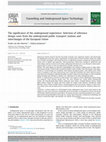
Background: Recent research into the way public transport users appreciate stations and interchan... more Background: Recent research into the way public transport users appreciate stations and interchanges has highlighted several key aspects. Importantly, the optimization of these facilities should not simply aim to resolve dissatisfiers, but should also focus on addressing satisfiers, through the incorporation of factors such as comfort and experience. 'Soft requirements,' which have emerged in architecture and urban design, need to crossover to the urban underground infrastructure (as an element of urban underground space) in order to meet the expectations of public transport users. Method: This study applies an innovative methodology in the analysis of good practice in urban underground space design, a method more commonly found in cultural studies. Three dimensions in the appreciation of a creative design are considered: views held by the general public; views held by peers (other artists or designers); and views expressed by critics. Using this framework, the article discusses prominent showcases of European underground public transport stations and interchanges, in order to identify design principles that determine a positive user experience of an urban underground space. Results: A comprehensive overview of good practice with regard to urban underground station design was produced, using reference design cases. The cases included are: Canary Wharf Underground Station; the Georg-Brauchle-Ring Station; Souterrain Tram Tunnel; Triangeln Railway Station; Toledo Metro Station; F} ovám Tér Station and Szent Gellért Tér Station (Twin Stations); Chatelet-Les Halles RER Hub; Canary Wharf CrossRail Station; and Birmingham New Street Station. Analysis of these reference design cases (and the good practices involved) allows for the description of 'satisfying' design solutions. Conclusion: A robust analysis of a well-designed urban underground space can be made based on the opinions of users, peers and critics, through the use of social media, via recognition in prizes and awards and through indexed architectural periodicals. The design principles constituting good practice in underground space design identified in this study are: canopy; open station box; underground morphology and textures; architectural light; intervisibility; art; volume; and proximity.
Abstract: Starchitect Zaha Hadid won the bid to design one of the planned stadiums for the 2022 F... more Abstract: Starchitect Zaha Hadid won the bid to design one of the planned stadiums for the 2022 FIFA World Cup event in Qatar. Her design for the Al-Wakrah stadium became the centrepiece of a discussion on the role that starchitects play in society. That debate reached a boiling point in August 2014, and resulted in a digital lynching party that sheds serious doubts on the ethics and professionalism of architectural critics and journalists alike.
The attention the electric car receives as a promising means of sustainable transportation seems ... more The attention the electric car receives as a promising means of sustainable transportation seems at times to overshadow the rise of that other electric vehicle: the pedelec or electric bicycle. For those who don't know yet: a pedelec is a bicycle assisted by an electric motor. That motor is powered by a rechargeable (lithium-ion) battery. The motor is intended to assist pedaling, not to replace it. It is the newest evolution of the bike. Its numbers are growing fast. This paper assumes that the growing use of pedelecs requires a different approach from design research and policy making towards electric two wheelers. It will outline the major differences between regular bike use and pedelec use and addresses issues like city to city cycling, bicycle theft, parking and street charging.
Vijf jaar promotieonderzoek naar de mogelijke inzet van ondergronds bouwen voor de inpassing van ... more Vijf jaar promotieonderzoek naar de mogelijke inzet van ondergronds bouwen voor de inpassing van autosnelwegen leidde tot deze publicatie. Verkeerstunnels moeten de ruimtelijke kwaliteit rond de infrastructuur verbeteren en mogelijkheden bieden voor meervoudig ruimtegebruik. De Ring Rotterdam en de Ring Amsterdam staan model voor deze benadering. Beide Ringen zijn complexe snelwegen die meer dan eens parallel lopen met spoor- en
Het onderzoek resulteert in twee warmtekaarten, een atlas met achterliggende data, en een set van... more Het onderzoek resulteert in twee warmtekaarten, een atlas met achterliggende data, en een set van adaptatiemaatregelen die bij elkaar de stad Rotterdam en haar inwoners bewuster en weerbaarder maken ten aanzien van gezondheidseffecten tijdens hittegolven.

Anesthesiology
The Landtunnel Utrecht at Leidsche Rijn has become a milestone in Dutch tunnelling because it sig... more The Landtunnel Utrecht at Leidsche Rijn has become a milestone in Dutch tunnelling because it signifies a remarkable leap forwards in the conceptualisation, awareness and insight into the use of underground space technology and tunnelling for environmental purposes. At the beginning of the 21st century, all motorway tunnels in the Netherlands (with the exception of the Schiphol road tunnel) were subsurface constructions that were built to pass waterways. The Landtunnel Utrecht at Leidsche Rijn is the first aboveground motorway tunnel built to minimise the environmental impact of the road, and it allows development of the largest residential area in the Netherlands: Leidsche Rijn, Utrecht. Implementing the project highlights the difficulties decision makers face when they have to balance safety issues, high costs, multiple environmental issues, complex financing and urban development objectives. With no effective regulation in place and no similar practice to fall back on, the Landtu...
Het onderzoekprogramma 1992-1997 van de (inmiddels voormalige) vakgroep Stedebouwkunde, Faculteit... more Het onderzoekprogramma 1992-1997 van de (inmiddels voormalige) vakgroep Stedebouwkunde, Faculteit der Bouwkunde, Technische Universiteit Delft heeft twee onderzoekvelden omvat: Metropoolvorming en Stedelijke transformaties. Dit boek geeft een overzicht van de conclusies van de deelprojecten van het onderzoek naar de stedelijke transformaties.

Tunnelling and Underground Space Technology, Sep 1, 2010
ABSTRACT The Landtunnel Utrecht at Leidsche Rijn has become a milestone in Dutch tunnelling becau... more ABSTRACT The Landtunnel Utrecht at Leidsche Rijn has become a milestone in Dutch tunnelling because it signifies a remarkable leap forwards in the conceptualisation, awareness and insight into the use of underground space technology and tunnelling for environmental purposes. At the beginning of the 21st century, all motorway tunnels in the Netherlands (with the exception of the Schiphol road tunnel) were subsurface constructions that were built to pass waterways. The Landtunnel Utrecht at Leidsche Rijn is the first aboveground motorway tunnel built to minimise the environmental impact of the road, and it allows development of the largest residential area in the Netherlands: Leidsche Rijn, Utrecht. Implementing the project highlights the difficulties decision makers face when they have to balance safety issues, high costs, multiple environmental issues, complex financing and urban development objectives. With no effective regulation in place and no similar practice to fall back on, the Landtunnel Utrecht (together with Sijtwende and the Green Link A15) breaks ground to allow the use of motorway tunnels for a new and promising application: environmental and spatial integration of motorways in urban areas.
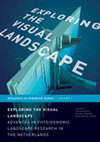
Exploring the Visual Landscape is about the combination of landscape research and planning, visua... more Exploring the Visual Landscape is about the combination of landscape research and planning, visual perception and Geographic Information Science. It showcases possible ways of getting a grip on themes like: landscape openness, cluttering of the rural landscape, high-rise buildings in relation to cityscape, historic landscapes and motorway panoramas. It offers clues for visual landscape assessment of spaces in cities, parks and rural areas. In that respect, it extends the long tradition in the Netherlands on physiognomic landscape research and shows the state of the art at this moment. Exploring the Visual Landscape offers important clues for theory, methodology and application in research and development of landscapes all over the world, from a specifically Dutch academic context. It provides a wide range of insights into the psychological background of landscape perception, the technical considerations of geomatics and methodology in landscape architecture, urban planning and desig...

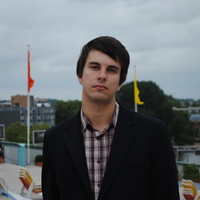




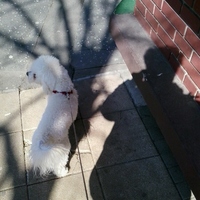




Uploads
Papers by Frank van der Hoeven